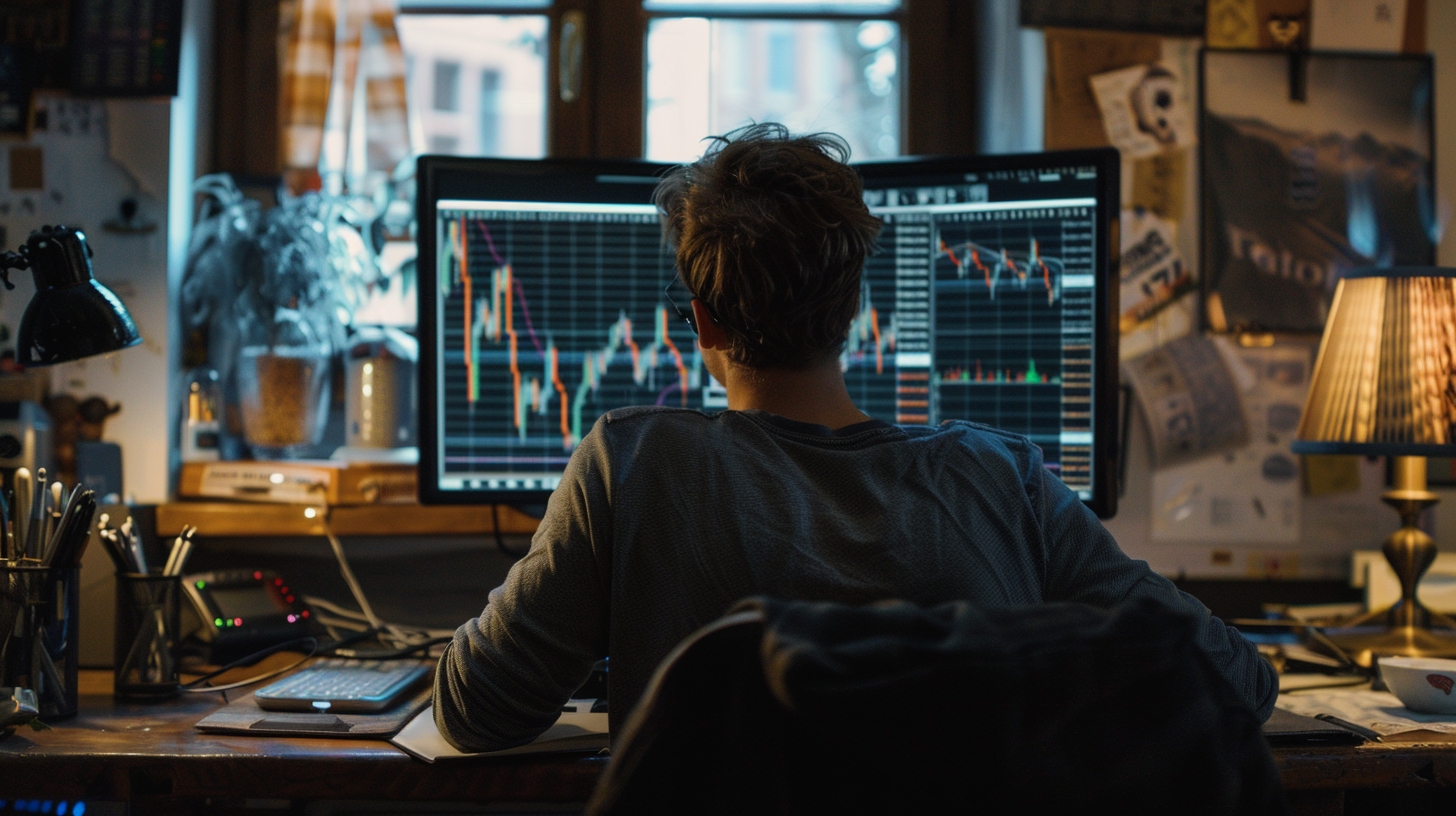Forex Leverage The Good and The Bad

One reason many people are drawn to forex trading compared to other financial instruments is the typically higher leverage available in forex markets compared to stocks. While many traders are familiar with the term "leverage," few fully understand its definition, mechanics, and impact on their bottom line.
The idea of using borrowed money to enter a transaction applies to forex markets as well. In this article, we'll explore the advantages of using borrowed capital for trading and discuss why incorporating leverage into your forex trading strategy can be both beneficial and risky.
Defining Leverage
Leverage involves borrowing a portion of the money needed to invest in an asset. In forex trading, this money is typically borrowed from a broker. Forex markets offer high leverage, allowing traders to control large amounts of money with a relatively small initial margin requirement.
To calculate margin-based leverage, you divide the total value of the transaction by the margin required:
**Margin-Based Leverage = Total Value of Transaction / Margin Required**
For example, if you need to deposit 1% of the total transaction value as margin and you want to trade one standard lot of USD/CHF, which equals $100,000, the required margin would be $1,000. This results in a margin-based leverage of 100:1 ($100,000 / $1,000). With a margin requirement of just 0.25%, the margin-based leverage would increase to 400:1, using the same calculation.
Understanding Real Leverage
However, margin-based leverage does not necessarily affect the risk level, and whether a trader must put up 1% or 2% of the transaction value as margin may not influence their profits or losses. This is because traders can always allocate more than the required margin for any position. Hence, real leverage, rather than margin-based leverage, is a more accurate indicator of potential profit and loss.
To calculate the real leverage being used, divide the total face value of your open positions by your trading capital:
**Real Leverage = Total Value of Transactions / Total Trading Capital**
For example, if you have $10,000 in your account and open a $100,000 position (equivalent to one standard lot), you are using 10 times leverage (100,000 / 10,000). If you trade two standard lots worth $200,000 with $10,000 in your account, your leverage is 20 times (200,000 / 10,000).
This means margin-based leverage is equal to the maximum real leverage a trader can use. Since most traders do not use their entire account as margin for each trade, their real leverage typically differs from margin-based leverage.
Traders should avoid using all their available margin and should only use leverage when the advantage is clearly on their side.
Once the risk in terms of the number of pips is known, the potential loss of capital can be determined. As a general rule, this loss should never exceed 3% of trading capital. If a position's potential loss could be, say, 30% of trading capital, then leverage should be adjusted accordingly. Traders will have their own risk tolerance and may choose to deviate from the 3% guideline.
To calculate the appropriate level of margin use, consider an example with $10,000 in a trading account. If you trade 10 mini USD/JPY lots, each pip move is worth approximately $10. For 100 mini lots, each pip move is worth about $100.
Thus, a 30-pip stop-loss could represent a potential loss of $30 for a single mini lot, $300 for 10 mini lots, and $3,000 for 100 mini lots. With a $10,000 account and a maximum risk of 3% per trade, you should leverage up to 30 mini lots, even though you might have the ability to trade more.
Leverage in Forex Trading
In the forex market, leverage can be as high as 100:1. This means that for every $1,000 in your account, you can control up to $100,000 in trading value. Many traders believe that forex market makers offer such high leverage because it correlates with manageable risk when the account is properly managed. Given the immense size and liquidity of the spot forex market, entering and exiting trades at desired levels is generally easier than in less liquid markets.
Currency movements are measured in pips, the smallest change in a currency's price, which varies by currency pair. These movements are typically fractions of a cent. For instance, if the GBP/USD pair moves 100 pips from 1.9500 to 1.9600, it's just a 1 cent change in the exchange rate.
Therefore, forex transactions are conducted in large amounts to amplify these small price movements into substantial profits through leverage. When trading amounts like $100,000, even minor changes in currency prices can lead to significant gains or losses.
Risk of Excessive Real Leverage in Forex Trading
Leverage in forex trading can significantly amplify both profits and losses. The higher the leverage applied to your capital, the greater the risk you undertake. This risk isn't necessarily tied to margin-based leverage, although it can be influenced if a trader isn't careful.
Consider this example: Both Trader A and Trader B have $10,000 in trading capital and use a broker that requires a 1% margin deposit. After analyzing the market, they agree that USD/JPY is likely to fall from its current value of 120, so they both decide to short USD/JPY.
Trader A uses 50 times real leverage, shorting $500,000 worth of USD/JPY (50 x $10,000). Since USD/JPY is at 120, one pip for one standard lot is worth approximately $8.30, making one pip for five standard lots worth roughly $41.50. If USD/JPY rises to 121, Trader A loses 100 pips, resulting in a $4,150 loss, which is 41.5% of their total capital.
Trader B, being more cautious, uses five times real leverage, shorting $50,000 worth of USD/JPY (5 x $10,000). This amount equals half of one standard lot. If USD/JPY rises to 121, Trader B also loses 100 pips, but this results in a $415 loss, which is 4.15% of their total capital.
This example highlights how the same market movement can have vastly different impacts on traders based on the leverage they use.
|
|
Trader A |
Trader B |
|
Trading Capital |
$10,000 |
$10,000 |
|
Real Leverage Used |
50 times |
5 times |
|
Total Value of Transaction |
$500,000 |
$50,000 |
|
In the Case of a 100-Pip Loss |
-$4,150 |
-$415 |
|
% Loss of Trading Capital |
41.5% |
4.15% |
|
% of Trading Capital Remaining |
58.5% |
95.8% |
How Does Forex Margin Compare to Stock Trading?
Leverage in forex markets is typically much higher than the 2:1 leverage common in stock trading and the 15:1 leverage often seen in the futures market. Although 100:1 leverage may appear extremely risky, the actual risk is lower considering that currency prices usually fluctuate by less than 1% during intraday trading.
Are Forex Markets Volatile?
Forex markets are among the most liquid markets globally, making them generally less volatile than markets such as real estate. The volatility of a specific currency is influenced by various factors, including the political and economic conditions of its country. Events like economic instability, payment defaults, or imbalances in trade relationships with other currencies can lead to significant volatility.
How Much Leverage Should I Use?
Traders should select a leverage level that aligns with their risk tolerance. Conservative traders or those still learning to trade currencies might prefer lower leverage levels, such as 5:1 or 10:1. More experienced or risk-tolerant traders might be comfortable with leverage levels of 50:1 or even higher.
The Bottom Line
Leverage should not be feared once you understand how to manage it effectively. The only scenario where leverage should be avoided is if you prefer a hands-off approach to trading. Otherwise, with proper management, leverage can be used successfully and profitably. Like any sharp tool, leverage requires careful handling—once you master this, there's no reason for concern.
Using smaller amounts of real leverage for each trade allows for more flexibility, enabling you to set a wider but reasonable stop and reduce the risk of significant capital loss. Highly leveraged trades can rapidly deplete your trading account if the market moves against you, leading to larger losses due to the increased lot sizes. Remember, leverage is flexible and can be tailored to suit each trader's needs.


 Русский
Русский  Español
Español  Deutsch
Deutsch  Indonesian
Indonesian  Português
Português  Français
Français  Nederlands
Nederlands  Italiano
Italiano  中文
中文  عربي
عربي  Türkçe
Türkçe 

